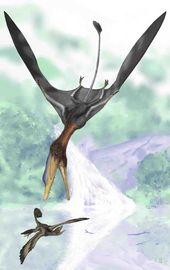OF THE
TIMES
Heaven and hell are eternal places because they are always present at the extremes of human existence, for better or for worse. People are constantly choosing between them, although they are generally not conscious of that in an articulated manner.
I think I'd like to propose a correction to the title of this article: Netanyahu doesn't appreciate the youth in merica cause he is akin to Nazis...
I'm incredulous that in the House of Congress in the swamp-land of dc - they want to pass more laws about antisemitism. ~ I send out strong...
Israel and USA are tied together in a biblical sense. It's not a Jewish thing solely. Only 2 nations pledge allegiance to GOD. Israel and Oosa....
I remember reading this story word for word at least 6 months ago!
First published on Apr 07. I knew I'd seen that title before.
To submit an article for publication, see our Submission Guidelines
Reader comments do not necessarily reflect the views of the volunteers, editors, and directors of SOTT.net or the Quantum Future Group.
Some icons on this site were created by: Afterglow, Aha-Soft, AntialiasFactory, artdesigner.lv, Artura, DailyOverview, Everaldo, GraphicsFuel, IconFactory, Iconka, IconShock, Icons-Land, i-love-icons, KDE-look.org, Klukeart, mugenb16, Map Icons Collection, PetshopBoxStudio, VisualPharm, wbeiruti, WebIconset
Powered by PikaJS 🐁 and In·Site
Original content © 2002-2024 by Sott.net/Signs of the Times. See: FAIR USE NOTICE

Reader Comments
to our Newsletter